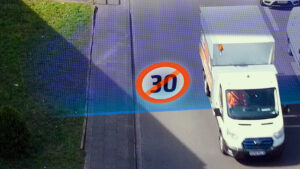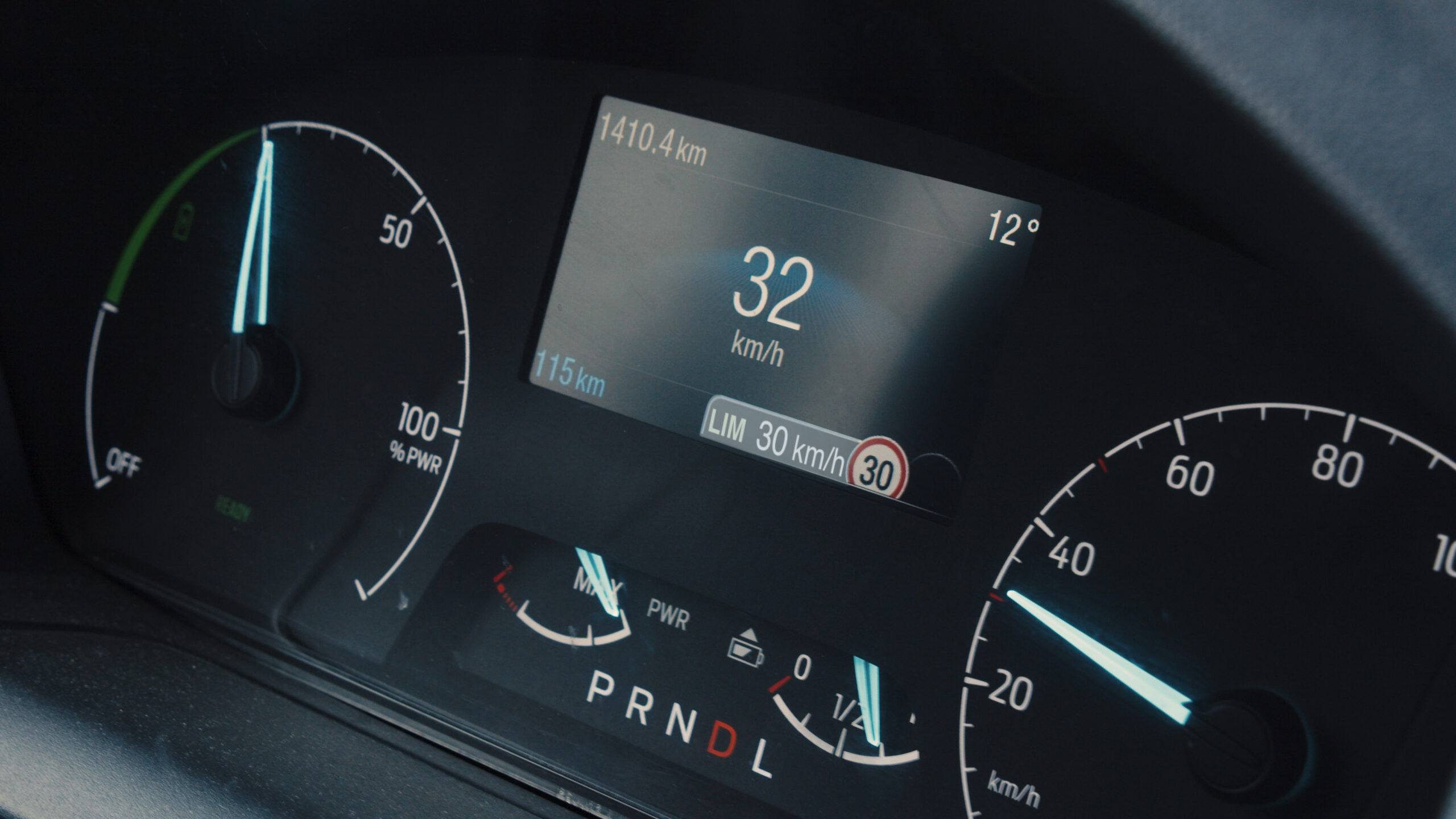
Ford Europe & U.S. engineers trial geofencing speed control system in Germany
By onTechnology
Ford Europe and some of the OEM’s engineers in California are conducting trials of connected vehicle technology using geofencing, or a virtual geographical boundary, in Germany that “could one day do away with the need for speed limit signs completely,” Ford states in a news release.
Ford hopes its Geofencing Speed Limit Control system could make streets safer, help drivers slow down and avoid speeding tickets, and improve roadside appearance by no longer needing traffic signs.
“Connected vehicle technology has the proven potential to help make everyday driving easier and safer to benefit everyone, not just the person behind the wheel,” said Michael Huynh, manager of City Engagement Germany at Ford of Europe, in a statement. “Geofencing can ensure speeds are reduced where – and even when – necessary to help improve safety and create a more pleasant environment.”
Ford believes its driver assistance technologies Intelligent Speed Assist and Adaptive Cruise Control with Stop & Go already help ensure drivers don’t go over the speed limit, but its geofencing system is potentially more flexible and effective than on-board systems.
The trial is the result of a collaboration between the Ford City Engagement team, city officials in Cologne and Aachen, and Ford software engineers in Palo Alto, California. Together with colleagues in Aachen, the Palo Alto engineers developed technology that connects the vehicle to the geofencing system for GPS tracking and data exchange, according to the release.
Researchers are using two Ford Pro vehicles to analyze the impact of speed limiting on improving traffic flow and reducing the risk of accidents. Testing with the all-electric Ford E-Transit vans extends to all 30 kmh zones in the center of Cologne and in selected 50 kmh and 30 kmh zones elsewhere in the city.
The year trial builds on other recent Ford research projects that “endeavour to help improve road safety,” including connected traffic light tech that could automatically go green, offering clearer routes for ambulances, fire trucks, and police vehicles as well as the use of specific speakers inside the vehicle to alert drivers to the direction from which people and objects are approaching.
Ford’s Local Hazard Information, introduced on Ford Puma in 2020, is also helping to make roads safer, according to the automaker. The connected technology, now on 500,000 Ford vehicles in Europe, alerted drivers to more than 35,000 broken down vehicles – both Ford and other makes – and warned drivers of more than 100,000 hazards ahead per month in Europe in 2021, according to the news release.
So, how does the Geofencing Speed Limit Control system work? Drivers will see the upcoming speed limit flashing below the current speed on the dashboard display cluster and the vehicle will automatically reduce its speed to that of the geofenced zone. The driver, however, can override the system and deactivate the speed limit control at any time.
“In the future, Ford’s Geofencing Speed Limit Control system could enable drivers to set their own geofencing zones at speeds as low as 20 km/h, including at depots and private facilities,” the release states. “Speed limits could also be set dynamically, to take into account local hazards, temporary road works and the time of day.”
The trial lasts until March 2023 and is part of broader research initiatives to put pre-production and prototype Ford E-Transit vehicles “to the test” across a variety of intensive real-world operating scenarios, including in the postal, municipal, and utility services, and last-mile and grocery delivery sectors within France, Germany, Italy, the Netherlands, Norway, and the UK.
“Our drivers should benefit from the latest technical support, including geofencing based assistant systems that enable them to keep to the speed limits and fully concentrate on the road,” said Bert Schröer, AWB head of vehicle technology and mobility. AWB is a waste disposal company involved in the trial along with the City of Cologne.
Ford is also using geofencing technology to improve air quality in cities, ensuring that the Ford Transit Custom plug-in hybrid electric vehicle runs automatically in zero-emission electric-drive mode whenever the vehicle enters a low‑emission zone, the release states.
IMAGES
Featured image: Geofencing technology creates a virtual area where vehicles slow down, rather than relying on drivers spotting signs that may be on unfamiliar routes, or overgrown. (Photo provided by Ford Motor Co.)
Ford vehicles in the ongoing trial of the Geofencing Speed Limit Control system will have an upcoming speed limit flashing below the current speed on the dashboard display cluster and the vehicle will automatically reduce its speed to that of the geofenced zone. (Photo provided by Ford)

